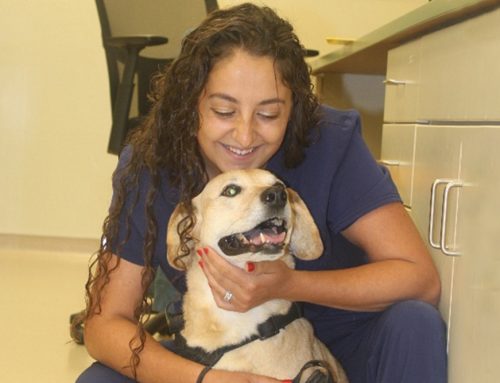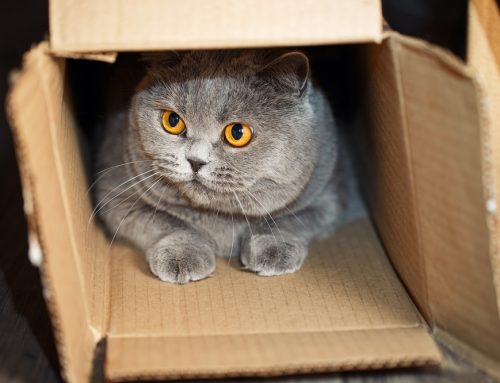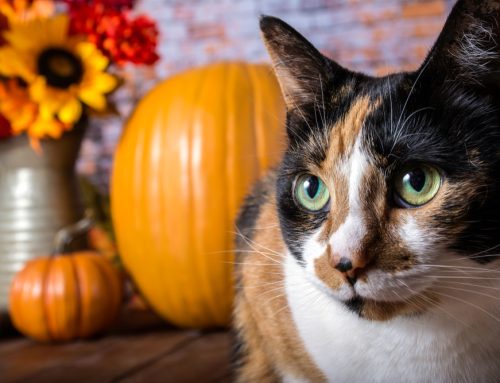Who hasn’t laughed at a fat cat trying to fit into a small box or an overweight dog attempting to go through a tiny pet door? However, overweight pets are no laughing matter. Excess weight can significantly affect your pet’s quality of life, and overweight and obese pets typically do not live as long as healthy-weight pets. Our Heritage Veterinary Clinic team knows that losing weight can be difficult for your pet, and we offer tips to help you keep them at their ideal weight.
#1: Understand the dangers of pet obesity
Studies demonstrate that carrying excess adipose tissue (i.e., fat) can increase a pet’s risk for debilitating conditions and diseases and reduce their life expectancy by an average of two and a half years. Examples include:
- Orthopedic diseases — Overweight and obese pets are at increased risk for orthopedic diseases such as arthritis, and overweight pets affected by conditions such as hip dysplasia, elbow dysplasia, and luxating patella tend to exhibit signs more frequently. In addition, adipose tissue produces mediators that cause inflammation throughout the entire body, exacerbating joint pain and inflammation.
- Metabolic and endocrine disorders — Excess weight interferes with the body’s hormonal balance and cellular ability to respond appropriately to insulin, increasing metabolic and endocrine disorder risks.
- High blood pressure — An overweight pet’s heart must work harder to effectively pump blood throughout the body, elevating blood pressure. Hypertension is a damaging condition that can lead to heart and vascular issues, kidney disease, and retinal detachment.
- Mobility issues — Overweight and obese pets have difficulty keeping active and often experience significant mobility issues.
- Respiratory issues — Excess fat in the chest and abdominal cavity can make breathing difficult, which puts overweight pets at increased risk for issues such as tracheal collapse.
- Cancer — Overweight pets are predisposed to many cancer types, especially intra-abdominal cancers.
#2: Schedule regular pet wellness exams
Annual and bi-annual wellness exams, which include weight assessment and tracking, help our Heritage Veterinary Clinic team keep your four-legged friend as healthy as possible. At every visit, we will not only weigh your pet, but also assess their body condition score (BCS) and muscle condition score (MCS). We will observe your pet from different vantage points and palpate their ribs and certain body areas to determine their weight status. We will also make recommendations to help keep your pet at an ideal weight. In addition, we can detect conditions such as Cushing’s disease that may inhibit your pet’s ability to lose weight.
If your pet is obese or overweight, schedule an appointment with our team, so we can devise a safe weight-loss strategy. Putting your pet on a diet without veterinary guidance can lead to serious health complications. We can find the best approach that will help your pet lose weight and offer recommendations to keep them from going hungry during the process.
#3: Weigh your pet regularly
Once you know your pet’s ideal weight, weigh them about once a month on a baby scale to ensure they maintain a healthy weight. A quarter of a pound increase can be significant in a cat or small-breed dog, but you may not recognize subtle weight changes when you see your pet daily.
#4: Calculate your pet’s caloric needs
Leaving out food may seem the easiest way to feed your pet, but this practice can quickly lead to weight gain. Consider your pet’s age, breed, weight, activity level, and spay or neuter status, and carefully calculate their daily caloric needs. Once you know the number of calories your pet needs per day, check their food label to determine the appropriate food amount. If possible, split the amount and feed them two or three small meals per day.
#5: Accurately measure your pet’s food
Eyeballing your pet’s meal portions can lead to over- or underfeeding, and for a cat or small dog, one or two kibbles can make a big difference. Use a kitchen scale or measuring cup to accurately measure their food, so you ensure they receive the precise amount.
#6: Limit your pet’s treats
You likely find ignoring those sad, pleading eyes extremely difficult, but treats should account for no more than 10% of your pet’s daily calories. Choose healthy, low calorie treats, such as small vegetable and fruit pieces, and ensure you account for these calories in your pet’s overall daily intake.
In addition, avoid giving your pet table scraps, which encourages weight gain. Worse—many human foods are dangerous for pets, leading to toxicity or pancreatitis.
#7: Ensure your pet gets adequate exercise

Similar to humans, pets need daily aerobic exercise to stay fit and healthy and to help them stay mentally engaged. Schedule at least 10 to 15 minutes twice a day to exercise your pet. Options include:
- Walking — Walking is a great exercise, but the key is to begin briskly. If you let your pet stop and sniff everything along the way, they won’t get their heart rate up. Hold the leash close and set an energetic pace.
- Playing fetch — Some pets love a rousing game of fetch, and this is a great option if walking or another physical activity is difficult for you.
- Chase toys — Laser pointers and wand-style toys are great to encourage your cat to move.
- Swimming — For water-loving dogs, swimming is a good low-impact exercise that is especially helpful for arthritic dogs, because stress on their joints is reduced.
If you are concerned that your furry pal is overweight, or if you would like to schedule a wellness exam, contact our Heritage Veterinary Clinic team.







Leave A Comment